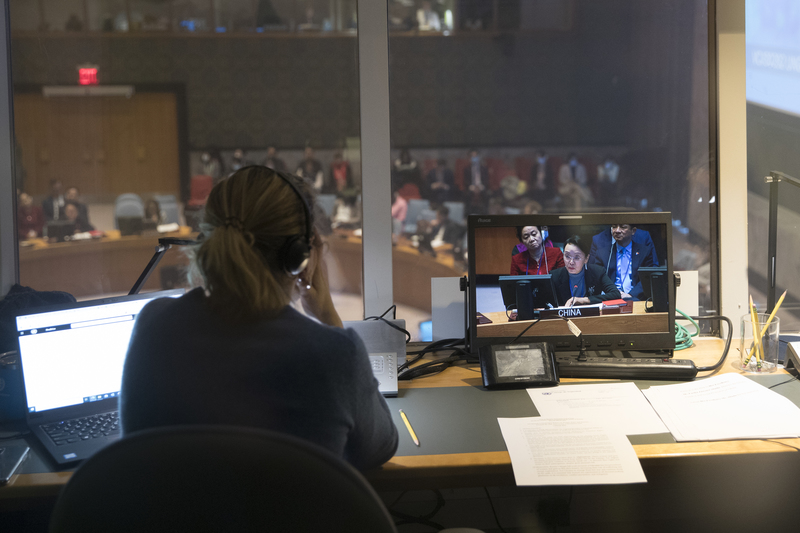Virtual reality (VR) is increasingly being applied to translator and interpreter education, offering immersive environments that traditional classrooms cannot match. By simulating realistic scenarios – for example, standing in a virtual conference room or a hospital ward – VR tools help trainees practice context-aware interpreting and translation in a safe setting. Recent reviews highlight a surge of interest in VR for language training. A 2025 scoping review found a notable rise in research on VR for interpreting education, with users generally reporting very positive experiences of VR’s functionality and immersion. Early reports indicate VR can “promote interpreting learning outcomes” according to test comparisons, though authors caution that the technology is still evolving and faces technical issues.
There is growing evidence that VR training can boost translation accuracy and overall performance. In experimental studies, trainees who used fully immersive 3D VR simulations often outperformed peers in non-VR control groups. For example, Zhang and Zhou (2021) compared interpreting performance with and without a VR preparation session, and found the immersive condition “help[ed] reduce the cognitive load … and improve the interpreting performance” of student translators. Chan (2023) similarly reports that students practicing with a VR interpreting platform “significantly improved their self-rated language and interpreting ability, as well as their interpreting performance” across tasks and languages. VR’s usefulness is also seen in applied settings. In a medical interpreting program at the University of Iowa, students watched 360° VR videos of doctor-patient encounters. Instructors observed that this allowed learners to rehearse complicated medical vocabulary and cultural nuances under realistic conditions, improving their accuracy and professionalism without real-world risk. In practice, educators using VR note that their students tend to make fewer critical errors on high-stakes tasks, presumably because those students have effectively rehearsed similar scenarios. Even limited deployments can pay off: by recording VR sessions, trainers can quantify improvements in word choice or error rates, providing hard data on learning gains. Overall, VR modules not only enrich the learning experience but also give data-driven evidence of student improvement.
Immersive VR can also speed cognitive processing. By surrounding trainees with rich visual and situational cues, VR simulations appear to lower the interpreter’s mental burden and make responses more automatic. As noted above, Zhang and Zhou found that VR immersion markedly reduced cognitive load during consecutive interpreting tasks. In practical terms, this often means learners can react more quickly when faced with new information. For instance, a Chinese study observed that VR practice helped “improve students’ ability to adapt to situations” on the fly – in other words, to think and respond faster in context. Instructors report that after a few VR sessions, students make decisions more fluidly, as if the language environment has become more natural. Overall, the embodied nature of VR (involving whole-body interaction) seems to free cognitive resources and accelerate translation tasks.
Another key benefit is confidence. Instructors consistently note that VR exercises reduce learners’ anxiety and build self-assurance. In the Iowa medical interpretation project, for example, researchers found that “immersing the students in a VR scenario lowers their stress” by letting them experience difficult situations beforehand. With stress minimized, trainees approach real tasks with much more confidence. Chan (2023) quantifies this: students who trained in VR reported a significant boost in how capable they felt interpreting. Moreover, VR’s repeatable practice means mistakes happen in a non-judgmental virtual space. Students can “review their performance” later and learn from errors without pressure. This guided feedback loop – similar to flight or medical simulators – tends to produce more assured, polished interpreters.
Several case studies have confirmed VR’s educational value. Monash University (Australia) created a VR module for community interpreters working with victims of family violence, designing “authentic, situated learning scenarios in a safe, virtual environment” so that students became “better prepared to deal with the complexities” of real cases. In Europe, the EU’s IVY project explicitly uses VR to immerse trainees in 3D virtual conference rooms, giving them lifelike practice in interpreting among multilingual avatars. In China, researchers are integrating VR into translation courses: for example, a recent Chinese study describes VR-based lessons that “stimulate students’ interest and initiative” while training rapid on-the-spot response. Even small pilots have shown promise – a University of Tirana trial reported that adding VR offered “extraordinary opportunities” to enhance translation training. These international examples suggest VR is gaining traction as a way to make translation training more experiential and engaging.
Challenges remain, however. High-quality VR content can be time- and labor-intensive to produce. The Iowa team notes that filming and editing 360° scenarios was “complicated and time-consuming,” requiring scripted scenes and volunteer actors. Hardware cost is another barrier: many programs lack enough VR headsets or powerful workstations for all students. Chinese analysts likewise point out that wide VR adoption will depend on overcoming issues of hardware expense, content development, and teacher training. Some users even report discomfort or simulator sickness during long sessions. For now, most instructors pilot VR gradually – perhaps one module per semester – before rolling it out program-wide. As equipment gets cheaper and more off-the-shelf VR lessons become available, these obstacles should ease, making immersive practice more routine.
In summary, the evidence suggests immersive VR can enhance translation pedagogy. Across studies, trainees and teachers alike describe VR-trained students as more ready and effective than their peers. For example, Monash researchers found VR scenarios made students “better prepared” for interpreting tasks, and a literature review concludes that VR-based training has “positive significance” in improving learning outcomes. Put simply, well-designed VR modules can lead to more accurate, faster, and more confident translators. The practical takeaway for training directors is to pilot VR components in key courses. Even a few scenario modules can reveal whether learners improve in accuracy and speed when practicing in virtual situations.
Artlangs Translation brings together deep expertise in language pedagogy and emerging technology to help organizations design VR-enhanced training that meets real needs. Contact us today to learn more











